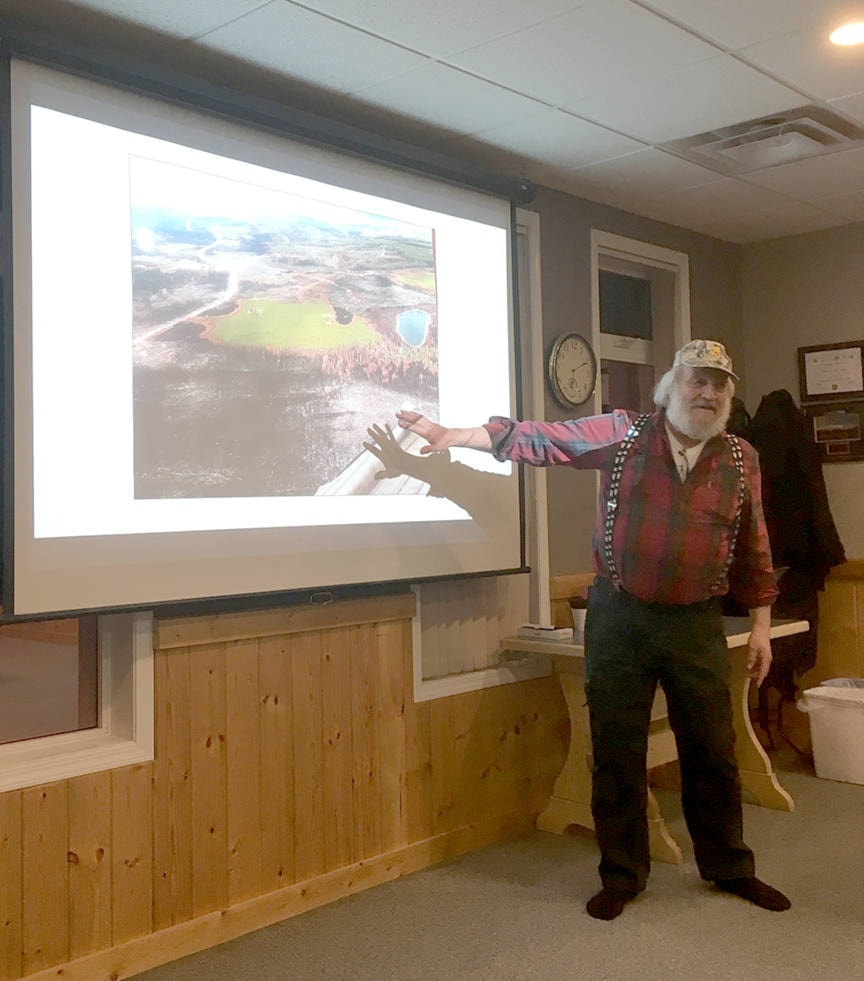Forester and longtime Burns Lake resident Miles Fuller warned a recent village council meeting that the community is lucky no one died in last summer’s wildfires.
“We lucked out. We lost nobody. The worst injury was a guy broke his wrist. We lost a few houses. It was a hell of a job done last year.”
Fuller, who is also president of the Chinook Community Forest told the council on Jan. 8, as part of what he called his “insider’s point of view” and yearly update on the fire situation that the catastrophic fires of 2018 are the type that kill people.
LOOK BACK: Burns Lake resident warns council of wildfire threats
“Of the seven or eight catastrophic fire events last summer…some traveled 20 kilometres in two hours and burned even at night. They shook the Wildfire service to the core.”
The conditions that cause such destructive fires are high temperatures, low humidity, wind and fuel.
“Of those four, we only have control over the fuel,” he said, referring to dead logs, branches and undergrowth on the ground.
Fuel, and fuel mitigation was his other main reason for speaking to the council and he said not enough is being done to reduce the fuel that disastrous fires feed on.
Frank Varga, General Manager of the Burns Lake Community Forest also joined the presentation and provided powerpoint images to illustrate Fuller’s points.
“There has to be a combination of harvesting, broadcast burning and other fuel mitigation efforts like growing of fire-resistant broadleaf species, or piling and burning of slash,” he said.
READ MORE: 20 years later, destructive ‘98 B.C. wildfire a reminder that fire fuels need to be cut
By way of his deployment of an Australian accent - picked up from a trip Down Under last year - and to the amusement of the those at the meeting, he explained that fire isn’t used enough in this area.
Pointing to the Australian state of New South Wales, which is a tropical, fire-based ecosystem, he said foresters there use controlled burns of undergrowth and let some forest fires burn because that’s how the environment regenerates itself.
“Interior BC is also a fire-based ecosystem. Here the forests get old, they burn, they die. We don’t let enough of the little fires burn. [But] we have to manage them some way.”
In his 40 years of experience in this area, he has seen the ecosystem treated as retention-based and that has heightened its susceptibility to fires and the fires’ severity.
The buildup of timber killed by the mountain pine beetle has made it worse.
“Tweedsmuir Park is an example of retention-based. It’s leaving logs and timber just to sit there.”
Fuller said he has hiked at Tweedsmuir through fuel on the forest floor that is sometimes at least one foot deep.
The goal, he said, is to try and move back towards treating the regional environment as the fire-based ecosystem it is.
For the council members Fuller’s point about fuel was well-received and councilor Charlie Rensby and mayor Dolores Funk asked the presenters how more support could be given to fuel mitigation efforts.
Rensby added that in the past “it has been trying dealing with the [Nadina Forest] District over fuel mitigation” and other in other aspects.
Funk and Rensby also suggested the possibility of starting a new fuel mitigation committee outside of the Timber Supply Group.
In response, Varga said that whatever the next step is “public communication and awareness and local leadership are very important.”
